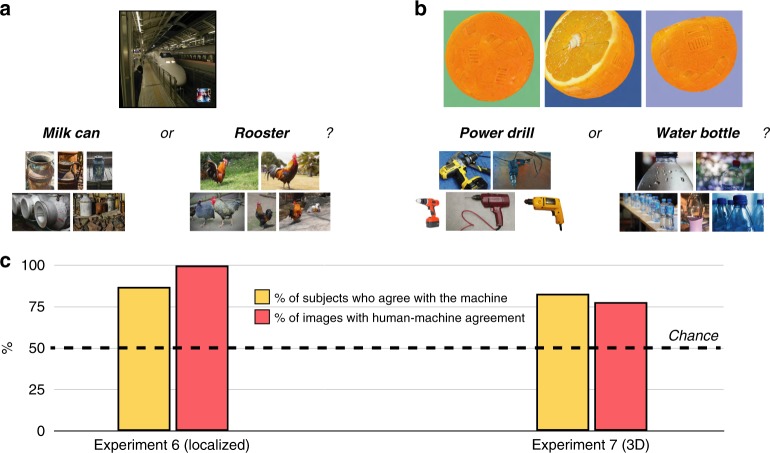Fig. 4.
Classification with perturbed natural images and 3D objects. a In Experiment 6, 200 subjects saw natural photographs that had a small adversarial perturbation in the bottom right corner of the image (22 images total); the subjects’ task was to choose between the machine’s choice for that image and a random label drawn from the other images in the imageset (which were accompanied by images of each target class for reference). b In Experiment 7, 400 subjects saw three viewpoints of a rendered 3D object whose adversarial perturbation caused a machine to misclassify (106 images total, of which each subject saw 53); the subjects’ task was to choose between the machine’s choice for that object and a random label drawn from the other objects in the imageset (with images of each target class for reference). c Most subjects agreed with the machine more often than would be predicted by chance responding, and most images showed human-machine agreement more often than would be predicted by chance responding (including every one of the LaVAN images). For Experiment 6, the 95% confidence interval for the % of subjects with above-chance classification was [82.5% 91.9%], and [84.6% 100%] (one-sided 97.5% confidence interval) for the % of images with above-chance classification. For Experiment 7, these intervals were [78.7% 86.5%] and [70.5% 86.1%], respectively. Across both experiments, these outcomes were reliably different from chance at p < 0.001 (two-sided binomial probability test)

